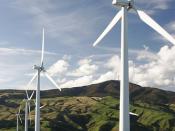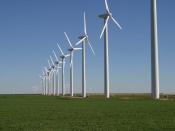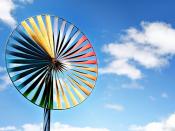ÃÂæWhat is the tone of Stanza I? Explain.
Stanza I has a tone of calm and sensuality created in it. The poet is only depicting the real image he sees in front of him, explain the monotony of an Autumn Day "conversing" with the Wind. There are no feelings involved in the depiction of the nature.
ÃÂæHow is the wind both destructive and preserver?
Shelley characterizes it as a destructive and fearsome force, yet it is also a harbinger of the inevitable coming of Spring. It is, therefore, both Destroyer and Creator, and Shelley sees the West Wind as a symbol of the regeneration which will follow the destruction and "death" of Winter. The West Wind is celebrated as a harbinger of new creation, manifested in Spring, and also feared for its destructiveness and great power.
ÃÂæWhat is the tone of Stanza II? How does the author describe the clouds?
In Stanza II we find the poet to be rather uncertain and concerned with the violence and terror of air storms.
This would also be the tone of this stanza. Shelley seeks to emphasize the terrifying darkness of the storm scene, with its darkness and associations with death. The clouds are described as being dark, stormy, foreshadowing a bad, ill - tempered mood or aura.
ÃÂæWhy is the poet using the imagery of waves in this poem about the Wind? What is the relationship between the Wind and the waves?
The waves are powerful just like the winds are. They forcefully hit anything they encounter. The Wind and the waves disturb the monotony of nature, annoying and disturbing it, sharing this way one similar characteristic. The waves' power is similar to the one that the Wind has.
ÃÂæWhat is the author asking for in Stanza IV?...



Good
I liked this essay because it helped me answer alot of my questions I had concerning this essay and cleared few doubts as well.
0 out of 0 people found this comment useful.